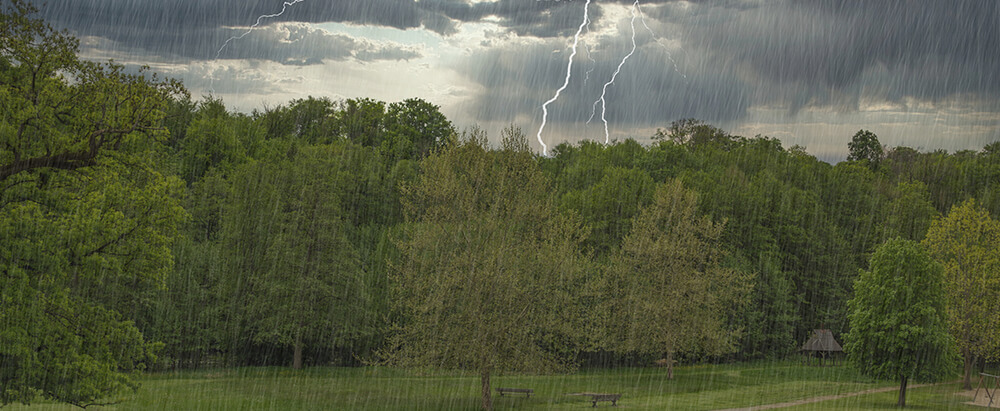Explaining Thunderstorm Asthma

Common asthma triggers are allergens (pollen, dust mites, mold), smoke, outdoor air pollution, fragrances, and infections like a cold or the flu. However, the weather can also be a trigger to some with asthma. In the winter, cold, dry air can cause asthma symptoms, which is why we recommend wearing a scarf around your nose and mouth to help warm up the air as it enters your lungs. Recent studies looked into another weather condition, thunderstorms, that have also been found to trigger asthma.
Can a Thunderstorm Trigger an Asthma Attack?
While it seems like a surprising trigger for an asthma attack, yes, thunderstorms have been known to increase the risk of an asthma attack. Storms may be a trigger when they occur during allergy season in the spring or summer. However, research is still ongoing and needs to be completed to fully understand how thunderstorms trigger asthma.
Asthma is an ongoing lung disorder that has no cure but can be controlled. When an asthma attack or flare-up is triggered, the airways narrow or become blocked, making it hard to breathe often due to swelling and increased mucus. Using medications as prescribed can help control your symptoms and allow you to live a normal life.
What is Thunderstorm Asthma?
Rain often helps allergy sufferers as it can drive pollen counts down; however, thunderstorms are a bit different. According to Dr. Tim Franxman, based in our Northern Kentucky and Ohio offices, the wind is also an important factor during a storm as the grass and tree pollen are wind borne. “As the wind comes in, pollen counts increase, and the updrafts pull the pollen up into moisture-rich clouds. In the clouds, the pollen will absorb the moisture, swell from osmotic pressure, and fragment into smaller particles.” It is thought that this fragmentation breaks one particle into many much smaller particles. These small pollen particles then fall back down to the ground with the storm and can be breathed in at a greater concentration than typical pollen particles. This higher concentration is believed to be what can trigger asthma symptoms in those with allergen triggers.
While the most well-known occurrence that has been studied occurred in Melbourne, Australia, it is a rare occurrence and can happen in the US.
How to treat thunderstorm asthma?
The primary way to treat thunderstorm asthma is to make sure your asthma is under control. We recommend continuing to take asthma medication as prescribed, even if you don’t feel any symptoms. This medication can control inflammation in the airway, which may be triggered by the pollen. If you start to feel symptoms during a thunderstorm, follow your asthma action plan to keep your symptoms from worsening. Those with known allergies can also monitor the pollen count to help prevent a reaction.
If you are struggling with your allergies and asthma, contact our office to schedule an appointment today.

